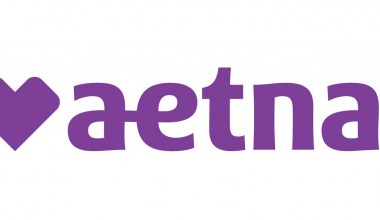Comparison shopping to find the best insurance companies in Ohio shouldn’t be a hassle. State laws affect which insurance coverage you need. These policies are required everywhere in Ohio, from Cincinnati to Cleveland.
Life Insurance in Ohio
Bestow and Haven Life are part of a new breed of insurers that operate online. Unlike more traditional insurers such as State Farm and MassMutual, Bestow and Haven Life only offer term life insurance policies. Both also offer at least one term no-medical-exam policy.
Haven Life is a digital insurance agency that sells life insurance policies that are then issued by MassMutual or C.M. Life (a subsidiary of MassMutual).
State Farm and USAA, in comparison, offer a more traditional insurance experience. The former has a broad network of agents across Ohio while the latter offers insurance to members of the military, their families, and veterans. Its life insurance, however, is available to all U.S. citizens and permanent residents.
Most of these insurers offer both term and permanent insurance, such as whole life and universal life.
Life Insurance Regulations in Ohio
Like most states, Ohio regulates the insurance market, and this includes laws and regulations that have been put into place to protect individuals purchasing life insurance. Here are a few ways the state ensures the rights of policyholders:
Review period
Many states mandate a review, or “free look” period, which allows new policyholders to cancel their policy within a certain period for a full refund of any premiums they have already paid. Although the state of Ohio does not have a review period stated in law, this may be something that your insurer offers as a company policy.
Contestability period
This refers to the amount of time an insurer has to contest the policy, if the insurer feels there was fraud or other misrepresentations on the original application. In Ohio, the contestability period is two years; after this time, the policy is considered incontestable.
Grace period
If you ever find yourself missing a payment of your monthly premium, you have a one-month grace period after the premium due date during which the policy will remain active and in force. If you have not paid your premium before that month has passed, however, you may risk losing your policy.
If you are to die during the grace period, the overdue premium will be deducted from the death benefit.
Best Whole Life Insurance Companies in Ohio
State Farm and USAA are among the best whole life insurance companies in Ohio, according to U.S. News research. MassMutual and Nationwide are in a tie for third.
Whole-life policies are a form of permanent insurance. That means that you will be assured of a death benefit for your beneficiary or beneficiaries for the rest of your life, as long as you continue paying your premiums.
There is also a savings component to whole-life policies called a cash value. A portion of your premium payments go into an account, and when they have reached a certain level, you can borrow from them. The interest in this account accrues with taxes deferred. Keep in mind, however, that if you borrow from your policy, it must be paid back or it will negatively impact the amount of the death benefit.
Generally, the cash value in a whole-life policy earns a fixed rate of interest. Your premiums, too, are usually a fixed rate that will not fluctuate from month to month.
As you might imagine, all this added functionality means that whole-life policies usually cost more than term insurance. Because of this, they may not be the best choice for those who are on a strictly limited budget.
Best Term Life Insurance Companies in Ohio
Bestow tops several ratings for the best term insurance companies in Ohio, with Haven Life coming in at No. 2, and State Farm and USAA tied for third place. Bestow offers a single-term policy, and Haven Life two, while State Farm has three-term options and USAA has two.
Term insurance is arguably the most straightforward type of life insurance. As the name suggests, it pays a death benefit to your beneficiary if you should die during the policy’s term, generally anywhere between one and 30 years. Unlike permanent insurance, there is no cash value. This means you are not able to borrow against the policy while it is in effect.
Term policies may be renewable, and in some cases can be converted to permanent policies at the end of the term.
Best Universal Life Insurance Companies in Ohio
The top contenders in this category are ties: State Farm and USAA for first place, with Nationwide and MassMutual in third place.
Like whole life, universal life is a type of permanent insurance. The policy remains in force until you die, as long as you pay your premiums, and have a cash value. Where it differs is in the level of flexibility that it offers. Universal life policies may have flexible premiums. And although the cash value of your account is guaranteed to grow, that growth is tied to the current interest rate and thus may change over time.
There are several types of universal life, based mainly on how the cash value is invested, including the following:
- Indexed universal life. The cash value in this type of policy is invested in a stock index, such as the Nasdaq-100. Your cash value grows based on the index you choose to invest in, and may grow faster than traditional universal life.
- Variable universal life. This type of policy lets you invest your cash value in the market by using sub-accounts where you allocate a certain amount as you wish. Your interest is not guaranteed with variable life, making it a more volatile option, but also one with the possibility for higher returns.
- Guaranteed universal life. Guaranteed universal life has elements of both term and permanent insurance. It can cover you for the rest of your life, but at a lower cost than whole-life policies. Because of this, however, the cash value does not accrue as quickly.
Best No Exam Life Insurance Companies in Ohio
The best no-exam insurance companies in Ohio include Bestow, Haven Life, State Farm, and USAA. All offer policies that do not require applicants to undergo a medical exam, although they may have to answer questions about their health on the application.
Most traditional insurance policies require individuals to take a medical exam when they apply. This is so the insurer has a good sense of the risk they are taking on by insuring this person. Someone with a pre-existing condition, for example, is likely to end up paying more than someone in excellent health.
No-exam policies include a handful of sub-types. The most common are the following:
- Accelerated issue. These are generally policies with a low maximum death benefit. They are underwritten using the data you supply along with other information they access on you from other sources such as motor vehicle or pharmacy databases. They offer rates that are comparable to policies that have been fully underwritten.
- Simplified issue. These have an even more spare underwriting process than accelerated issues. Since the insurer uses less information on you to write the policy, you may end up paying more. You’ll also find coverage limits in place that cap the amount of death benefit you can receive.
- Guaranteed issue. These policies offer guaranteed coverage, without an exam. They have limited coverage caps – usually set at $25,000 – and cost more than traditional life insurance.
Auto Insurance in Ohio
The average annual cost of a car insurance policy in Ohio is $1,083. That’s $460 less than the nationwide average cost for car insurance of $1,543 per year. Grange has the cheapest average rate for car insurance in Ohio: $720 per year.
| COMPANY | AVERAGE RATE |
|---|---|
| Allstate | $1,764 |
| Auto-Owners Insurance | $888 |
| Cincinnati Financial | $1,203 |
| Erie | $803 |
| Farmers | $1,178 |
| Geico | $871 |
| Grange | $720 |
| Nationwide | $878 |
| Progressive | $945 |
| State Farm | $1,920 |
| Travelers | $993 |
| USAA | $731 |
| Westfield | $1,186 |
| Statewide Average | $1,083 |
Ohio Car Insurance Rates by Top Cities
Your ZIP code can have a substantial impact on what you pay for car insurance. Among nine major Ohio cities in our study, drivers in eight of them can expect car insurance premiums higher than the statewide average rate of $1,083. Only the cheapest city we analyzed, Lorain, is cheaper than average at $1,046.
Toledo drivers pay the highest rates on average among Ohio cities in our analysis: $1,271 per year.
Get an online quote or speak with an insurance agent to compare the most accurate quotes for your area. Comparing car insurance quotes can help you find a policy that meets your insurance needs and suits your budget.
| CITY | AVERAGE PREMIUM |
| Akron | $1,188 |
| Canton | $1,127 |
| Cincinnati | $1,266 |
| Cleveland | $1,260 |
| Columbus | $1,233 |
| Dayton | $1,167 |
| Lorain | $1,046 |
| Toledo | $1,271 |
| Youngstown | $1,249 |
Minimum Coverage Car Insurance in Ohio
A minimum coverage policy will meet the state’s requirements for liability coverage. The cheapest average rate we found for minimum coverage in Ohio is $693 per year from Grange. That compares to a statewide average of $1,042 annually for minimum coverage.
The highest average rate in this category is $1,863 per year from State Farm.
| COMPANY | LOW COVERAGE |
|---|---|
| Allstate | $1,713 |
| Auto-Owners Insurance | $850 |
| Cincinnati Financial | $1,146 |
| Erie | $769 |
| Farmers | $1,136 |
| Geico | $819 |
| Grange | $693 |
| Nationwide | $885 |
| Progressive | $895 |
| State Farm | $1,863 |
| Travelers | $942 |
| USAA | $697 |
| Westfield | $1,144 |
| Statewide Average | $1,042 |
High Coverage Car Insurance in Ohio
Higher levels of coverage cost more but offer additional protections. The cheapest average rate for high coverage in Ohio is $765 from Grange. The average cost of a high-coverage policy in the state is $1,132 per year.
| COMPANY | HIGH COVERAGE |
|---|---|
| Allstate | $1,827 |
| Auto-Owners Insurance | $926 |
| Cincinnati Financial | $1,266 |
| Erie | $836 |
| Farmers | $1,249 |
| Geico | $941 |
| Grange | $765 |
| Nationwide | $864 |
| Progressive | $987 |
| State Farm | $1,995 |
| Travelers | $1,045 |
| USAA | $774 |
| Westfield | $1,241 |
| Statewide Average | $1,132 |
Which business insurance policies are required in Ohio?
State laws affect which business insurance coverage you need. These policies are required everywhere in Ohio, from Cincinnati to Cleveland.
Workers’ compensation insurance
The workers’ compensation system in Ohio is different than in most other states. Ohio law requires every business with employees to provide workers’ compensation insurance purchased through a state agency.
This policy covers medical bills for work-related injuries and illnesses. It also provides disability benefits for injured Ohio workers.
Workers’ comp policies purchased through the state fund don’t include employer’s liability insurance, which helps pay for lawsuits related to employee injuries. Ohio employers can buy this protection through a private insurer as stop-gap coverage.
Commercial auto insurance
All business-owned vehicles in Ohio must be covered by commercial auto insurance. This policy covers the cost of accidents involving work vehicles.
Ohio’s minimum requirements for auto liability insurance are:
- $25,000 bodily injury liability per person
- $50,000 bodily injury liability per accident
- $25,000 property damage liability per accident
Trucking companies may need additional coverage to comply with regulations.
Though it’s not required, personal vehicles driven for work purposes should be covered by hired and non-owned auto insurance (HNOA), as personal auto policies usually exclude business use. It can be added to commercial general liability insurance or a business owner’s policy (BOP).
General Liability Insurance in Ohio
When it comes to securing top-notch general liability insurance coverage, Thimble stands out as the best overall company, with an impressive MoneyGeek score of 90 out of 100.
To illustrate the market’s rankings, the table below showcases the rates and MoneyGeek scores for the various companies in Ohio, giving you a view into how Thimble excels compared to its competitors.
| Company | MoneyGeek Score | Monthly Cost Without Employees | Monthly Cost With 20 Employees |
|---|---|---|---|
| Nationwide | 90 | $33 | $34 |
| Thimble | 90 | $22 | $54 |
| Next | 88 | $25 | $25 |
| biBERK | 88 | $23 | No Data |
| The Hartford | 85 | $31 | $61 |
| Hiscox | 83 | $29 | $80 |
Cheapest General Liability Insurance in Ohio
Next stands out as the most affordable company, offering the lowest average monthly premiums for sole proprietors and LLCs at around $25 per month. To rank these companies, we used an affordability score that combines the monthly costs for sole proprietors and LLCs, with both contributing equally (at a 50% weighting) to the overall score.
While Next is the cheapest insurer on average, specific companies may offer the lowest rates for sole proprietors or LLCs separately.
Best General Liability Insurance for Employers in Ohio
Nationwide tops the chart as the best employer insurance provider, with an average monthly cost of $34 for LLCs. This ranking was determined by examining the average monthly price of general liability insurance for LLCs with 20 employees.
Your number of employees dramatically influences the cost of general liability insurance. Smaller businesses with less than 20 employees can expect to pay less than the average rates, while larger firms will likely need to pay a higher premium.
Do You Need General Liability Insurance in Ohio?
General liability may not be a legal requirement in Ohio, but it can be a good investment. This coverage acts as a safety net, shielding businesses from any financial burdens arising from accidents, injuries or property damage linked to their products, services or operations.
By investing in insurance, you’re fortifying your business against potential lawsuits and fostering a sense of trustworthiness and credibility among clients and partners. This is particularly in industries where contracts or licenses require coverage.
In Ohio, businesses are subject to specific business insurance requirements. For instance, workers’ compensation insurance is obligatory for companies with any number of employees. This coverage ensures that employees injured on the job receive adequate benefits and protection, ultimately creating a secure and supportive work environment.
Moreover, Ohio requires commercial auto insurance for vehicles utilized for business purposes. The state requires a minimum coverage of $25,000 per person, $50,000 per accident for bodily injury and $25,000 for property damage. This insurance protects businesses from financial liabilities resulting from vehicular accidents.
It underlines the importance of comprehensive coverage in maintaining a resilient and thriving enterprise.
Recommended Articles
- Restaurant Insurance: What Is It & How Much It Cost?
- Oklahoma Car Insurance Coverage: All You Need To Know
- Insureon Insurance Review 2023: Is It a Good Fit for Your Business?
- What Is Liability Car Insurance: Meaning & What It Covers
- Flooring Installer Insurance: Coverage & Cost
- Liability or Full-Coverage Car Insurance: Which Is Better?






